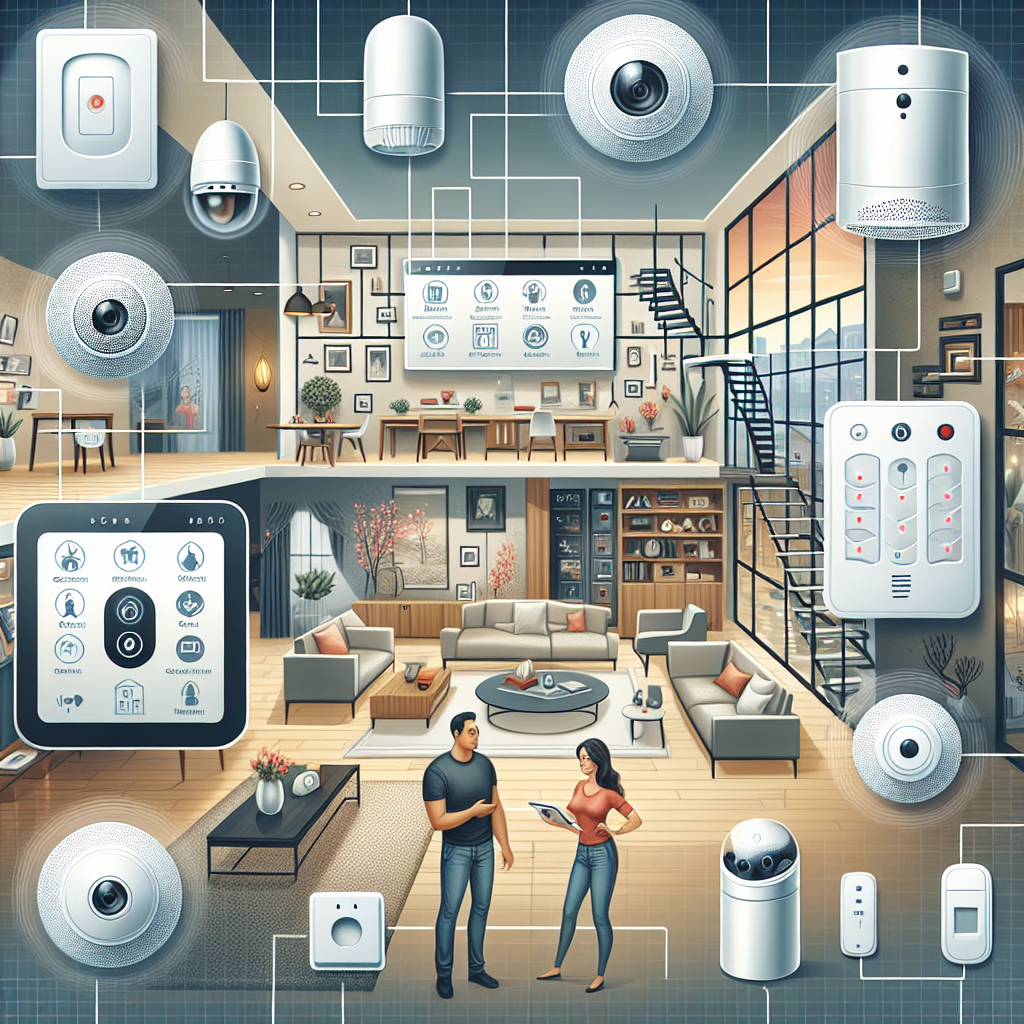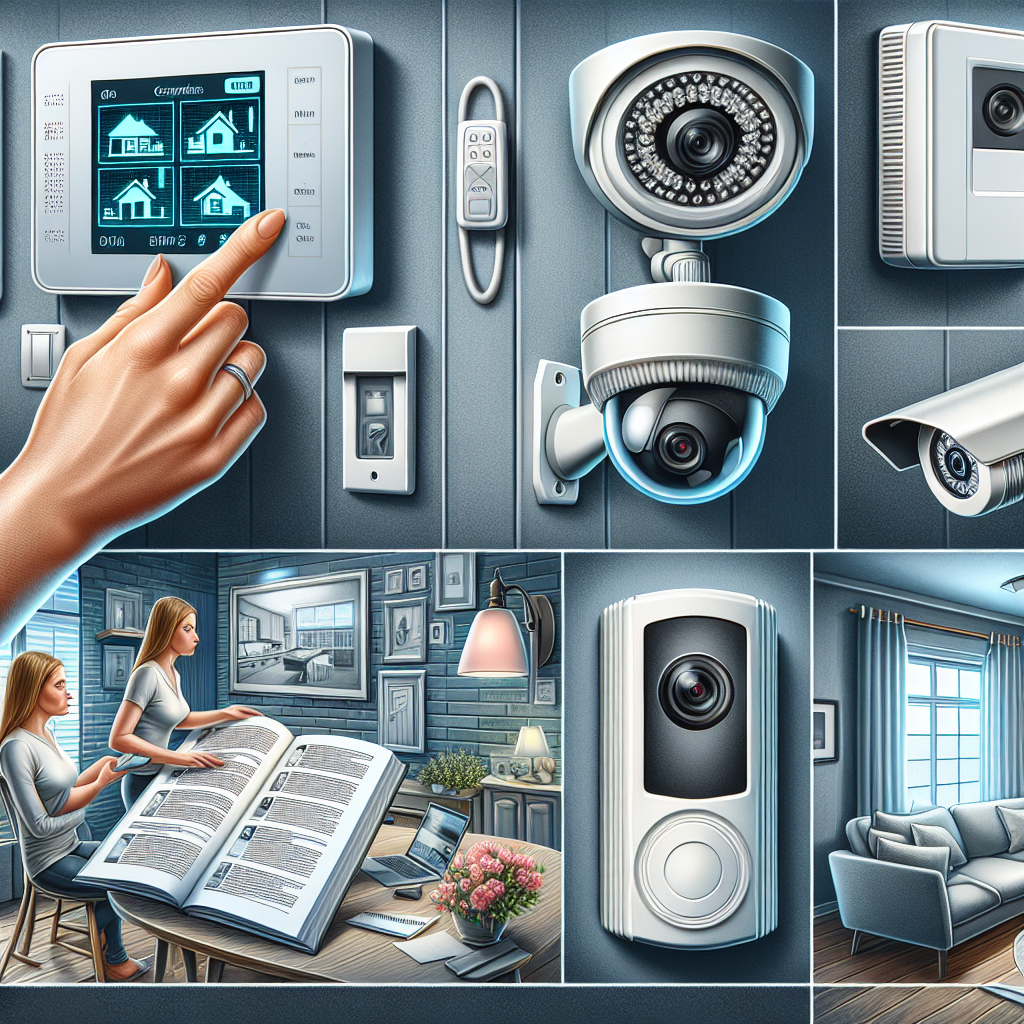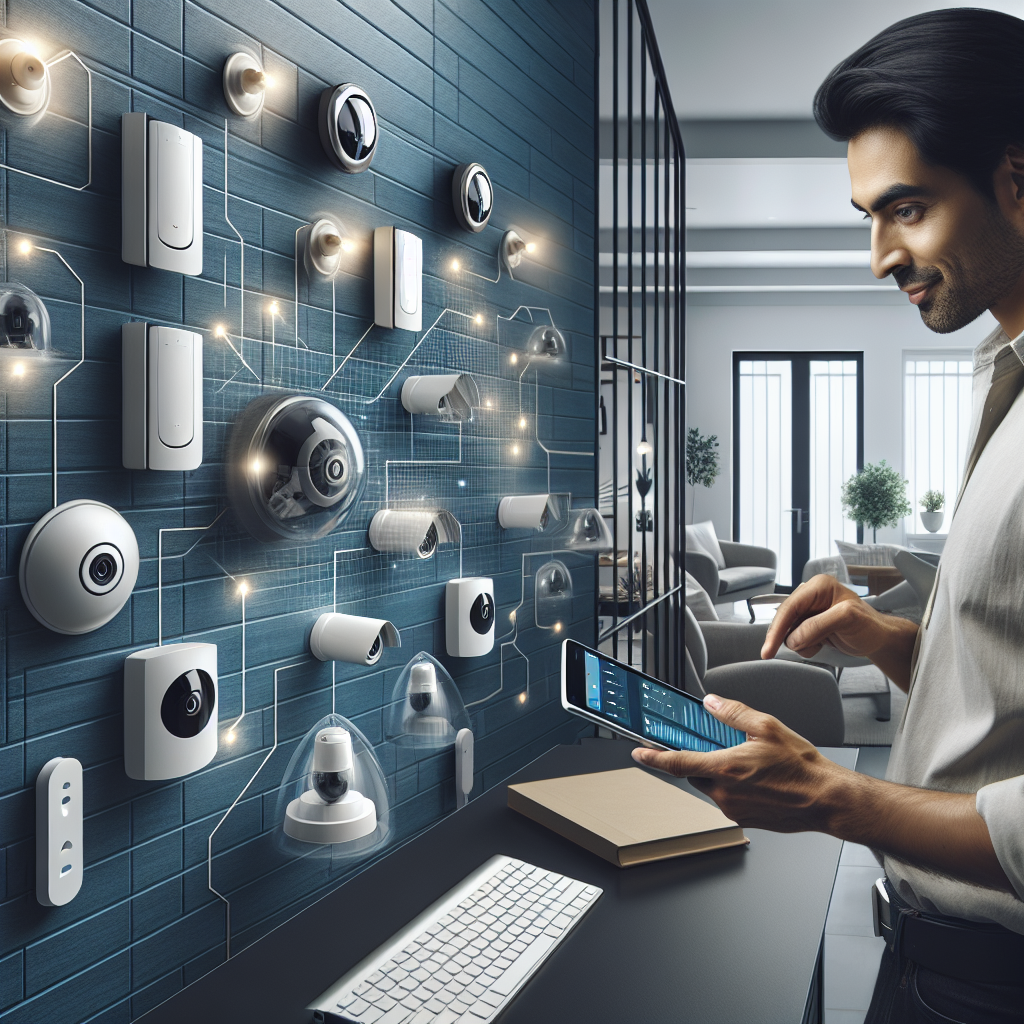In today’s world, ensuring the safety and security of our homes has become more crucial than ever. With the rise in technology, there are now a plethora of indoor alarm monitoring options available to enhance your home security measures. From traditional wired systems to advanced wireless solutions, the choices are endless. In this guide, we will explore the best indoor alarm monitoring options to help you make an informed decision on how to protect your home and loved ones. So sit back, relax, and let’s delve into the world of home security like never before.
Understanding Indoor Alarm Monitoring Systems
Indoor alarm monitoring systems are crucial components of any comprehensive home security setup. These systems are designed to provide continuous surveillance and protection for the interior of a residence. Understanding the intricacies of indoor alarm monitoring systems is essential for homeowners looking to enhance the safety and security of their living spaces.
- What is Indoor Alarm Monitoring?
- Indoor alarm monitoring involves the use of sensors, detectors, and surveillance cameras to monitor activity inside a home. These systems are connected to a central monitoring station that oversees alerts and responds to potential security breaches.
-
Indoor alarm monitoring is a proactive security measure that can help deter intruders and provide homeowners with peace of mind knowing that their property is being actively watched over.
-
How do Indoor Alarm Monitoring Systems Work?
- Indoor alarm monitoring systems utilize a network of sensors strategically placed throughout the home to detect any unusual activity or unauthorized entry.
-
When a sensor is triggered, it sends a signal to the central monitoring station, which then assesses the situation and takes appropriate action, such as notifying the homeowner or dispatching authorities if necessary.
-
Importance of Indoor Alarm Monitoring for Home Security
- Indoor alarm monitoring is a critical aspect of comprehensive home security as it provides real-time monitoring and immediate response to potential threats.
- By investing in an indoor alarm monitoring system, homeowners can significantly reduce the risk of burglary, vandalism, and other security incidents within their homes.
Understanding the role and functionality of indoor alarm monitoring systems is key to making informed decisions when it comes to enhancing home security measures.
Wired Indoor Alarm Monitoring Options

Wired indoor alarm systems are a traditional yet reliable option for enhancing home security. These systems utilize physical connections, such as telephone lines or Ethernet cables, to communicate signals between sensors, control panels, and monitoring centers.
-
Overview of Wired Indoor Alarm Systems
- Wired indoor alarm systems consist of hardwired sensors that are connected directly to a central control panel.
- The control panel is typically installed in a discreet location within the home and serves as the hub for monitoring and activating the alarm system.
-
Signals from the sensors are transmitted through the physical wiring to the control panel, which then communicates with the monitoring center in the event of an alarm.
-
Pros and Cons of Wired Indoor Alarm Monitoring
-
Advantages
- Reliability: Wired systems are less susceptible to signal interference or hacking compared to wireless systems.
- Consistent Power Source: Since wired systems are connected to the home’s electrical grid, they do not rely on batteries that may need frequent replacement.
- Integration with Home Automation: Some wired systems can be integrated with home automation platforms for added convenience and control.
-
Disadvantages
- Installation Complexity: Installing wired systems may require professional assistance to run cables discreetly throughout the home.
- Limited Mobility: Devices in a wired system are fixed in place due to the physical connections, which may limit flexibility in repositioning sensors.
- Vulnerability to Physical Tampering: Intruders could potentially disable a wired system by cutting or damaging the physical wiring.
Wireless Indoor Alarm Monitoring Options
Wireless indoor alarm systems have become increasingly popular for homeowners seeking enhanced security measures without the need for extensive wiring installation. These systems offer flexibility and convenience in monitoring home security.
-
Overview of Wireless Indoor Alarm Systems
Wireless indoor alarm systems utilize sensors and detectors that communicate wirelessly with a central control panel. These systems can include motion sensors, door/window sensors, and cameras to detect and alert homeowners of any unauthorized entry or suspicious activity inside the home.
-
Pros and Cons of Wireless Indoor Alarm Monitoring
Advantages
- Easy Installation: Wireless systems are typically easier to install compared to wired systems, as they do not require drilling holes or running cables throughout the home.
- Remote Access: Many wireless alarm systems offer remote access through mobile apps, allowing homeowners to monitor their property from anywhere.
- Expandable: Wireless systems are often modular and can be easily expanded by adding more sensors or devices to enhance home security.
- Reliability: With advancements in technology, wireless systems have become more reliable, offering secure communication between sensors and the control panel.
Disadvantages
- Signal Interference: Wireless systems may be susceptible to signal interference from other electronic devices or obstacles within the home, potentially impacting the system’s reliability.
- Battery Maintenance: Most wireless sensors operate on batteries that require periodic replacement, adding maintenance costs and the risk of sensor failure if batteries are not replaced promptly.
- Limited Range: The range of wireless communication between sensors and the control panel may be limited, especially in larger homes or buildings, requiring additional signal repeaters for extended coverage.
- Susceptibility to Hacking: As wireless systems rely on radio frequency signals, there is a potential risk of hacking or signal jamming by tech-savvy intruders, compromising home security.

Cellular Indoor Alarm Monitoring Options
Cellular alarm monitoring stands out from traditional wired and wireless systems due to its unique communication method. Instead of relying on landline phones or internet connections, cellular systems use cellular networks to transmit signals to the monitoring center. This provides a more secure and reliable means of communication, as it is not susceptible to common vulnerabilities such as physical line tampering or internet outages.
How Cellular Alarm Monitoring Differs from Wired and Wireless Systems
-
Communication Method: Cellular alarm monitoring utilizes cellular networks, while wired systems use physical landline connections and wireless systems rely on Wi-Fi or radio frequency signals.
-
Reliability: Cellular systems are considered more reliable compared to wired systems that can be disrupted by line cuts or wireless systems that may experience interference.
-
Installation: Cellular systems are typically easier to install since they do not require connecting to a landline or configuring a Wi-Fi network.
Benefits of Cellular Indoor Alarm Monitoring
Enhanced Reliability
Cellular indoor alarm monitoring offers enhanced reliability due to its dedicated cellular connection. This means that even if the power goes out or the internet is down, the cellular system can still communicate with the monitoring center. This reliability is crucial in emergency situations where immediate response is necessary.
Remote Access Capabilities
Another advantage of cellular indoor alarm monitoring is its remote access capabilities. Homeowners can easily control and monitor their alarm system from anywhere using a smartphone or computer. This allows for real-time alerts, status updates, and the ability to arm or disarm the system remotely, providing peace of mind and convenience.
Integrated Indoor Alarm Monitoring Solutions
Integrated alarm systems combine various security components to provide a comprehensive approach to indoor alarm monitoring. These solutions leverage technology to offer advanced features for enhanced home security.
-
What are Integrated Alarm Systems?
Integrated alarm systems bring together multiple security devices such as motion sensors, door/window sensors, surveillance cameras, and control panels into a unified network. This network allows for seamless communication between the different components, enabling a more robust and efficient monitoring system.
-
Features of Integrated Indoor Alarm Monitoring Solutions
Smart Home Integration
One of the key features of integrated indoor alarm monitoring solutions is their ability to integrate with smart home technology. This integration enables homeowners to control and monitor their alarm systems remotely using their smartphones or other smart devices. By connecting the alarm system to other smart devices such as lights, locks, and thermostats, users can create a more interconnected and responsive security ecosystem.
Customization Options

Integrated alarm systems offer a high level of customization to suit the specific needs and preferences of homeowners. From setting up custom alerts and notifications to creating personalized security scenarios based on different situations, these systems allow users to tailor their monitoring setup according to their requirements. This flexibility ensures that the alarm system aligns with the unique layout and dynamics of each home, maximizing its effectiveness in detecting and deterring potential security threats.
Factors to Consider When Choosing an Indoor Alarm Monitoring System
When evaluating indoor alarm monitoring options for enhanced home security, several key factors should be taken into consideration to ensure the chosen system is tailored to meet the specific needs of the property and its occupants. Here are some crucial aspects to ponder:
-
Budget Considerations: Before selecting an indoor alarm monitoring system, it is imperative to establish a budget that aligns with the desired level of security and available financial resources. Different monitoring services come with varying costs, so determining a budget range will help narrow down the options and ensure affordability without compromising on quality.
-
Property Size and Layout: The size and layout of the property play a vital role in determining the type of indoor alarm monitoring system that would be most effective. Larger homes may require more extensive coverage with additional sensors and monitoring devices to ensure comprehensive protection. Conversely, smaller properties may be adequately safeguarded with a more basic monitoring setup.
-
Monitoring Service Reputation: Researching the reputation and track record of monitoring services is essential in selecting a reliable provider. Reading customer reviews, seeking recommendations from trusted sources, and verifying the credentials of the monitoring service can help gauge the level of trustworthiness and effectiveness in responding to security alerts.
-
Additional Features and Add-Ons: In addition to basic monitoring services, considering the availability of additional features and add-ons can enhance the overall security system. Features such as mobile app integration, home automation capabilities, and emergency response services can provide added layers of protection and convenience for homeowners.
-
Compatibility with Existing Home Security Infrastructure: For homeowners with existing home security infrastructure in place, ensuring compatibility between the indoor alarm monitoring system and the current setup is crucial. Compatibility issues can lead to inefficiencies and gaps in security coverage, so verifying seamless integration is paramount for a comprehensive and cohesive security solution.
FAQs: Exploring the Best Indoor Alarm Monitoring Options for Enhanced Home Security
What are the benefits of indoor alarm monitoring?
Indoor alarm monitoring provides round-the-clock protection for your home, ensuring that any suspicious activity or emergencies are immediately detected and responded to. With indoor alarm monitoring, you can have peace of mind knowing that your home is being watched over even when you’re not there.
What are the different types of indoor alarm monitoring options available?
There are several indoor alarm monitoring options available, including professionally monitored systems, do-it-yourself systems, and smart home integration. Professionally monitored systems involve a monitoring company keeping an eye on your home and dispatching emergency services when needed. Do-it-yourself systems allow you to monitor your home yourself using cameras and sensors. Smart home integration allows you to control and monitor your alarm system remotely using your smartphone or other devices.
How do I choose the best indoor alarm monitoring option for my home?
When choosing an indoor alarm monitoring option for your home, consider factors such as your budget, the level of protection you need, and your comfort level with technology. If you prefer a hands-off approach, a professionally monitored system may be best for you. If you enjoy having control over your security system, a do-it-yourself system may be a good fit. Smart home integration is ideal for those who want to monitor their home on the go.
Do indoor alarm monitoring options require professional installation?
The need for professional installation varies depending on the type of indoor alarm monitoring option you choose. Professionally monitored systems typically require professional installation to ensure that all components are set up correctly and functioning properly. Do-it-yourself systems are designed for easy installation by the homeowner, while smart home integration may require some technical know-how to set up.
How reliable are indoor alarm monitoring options in detecting intruders?
Indoor alarm monitoring options are typically very reliable in detecting intruders, thanks to cutting-edge technology such as motion sensors, door/window sensors, and surveillance cameras. These systems are designed to detect any unusual activity or potential threats within your home and trigger an alarm or alert in real-time. This ensures that help is on the way quickly in the event of an intrusion.